



According to Greek mythology, humans were once whole beings and wielded great power. In their hubris, they challenged Zeus, king of the gods and the universe, who in rage commanded thunder to split the humans in half. Zeus said to them, “Go find your other half,” before scattering these humans and their halves all over the world, erasing their memories so they would never remember what their counterparts looked like. From then on, humans spend their entire lives searching for the other person who completes them so they can become whole and powerful again. This is a myth that has been passed down over generations by oral tradition. In a similar vein, the word “technology” originates from Ancient Greek: τέχνη (techne) and -λογία (-logia), or “technologia,” the study of techniques and methods. If this myth about one’s other half and technology appear entirely unrelated, one may perhaps find their connection in the revelatory words of Nam June Paik, the father of video art:
“Our life is half natural and half technological. Half-and-half is good. You cannot deny that high-tech is progress. We need it for jobs. Yet if you make only high-tech, you make war. So we must have a strong human element to keep modesty and natural life.”
Here, “half-and-half” may refer to equal halves of a larger entity or an unknown equilibrium. If we calibrate the relationship between humans and machines on a scale of zero to one hundred, every single point at which we may achieve equilibrium is a variation. How do we build a balance that is symbotic? With a main exhibition and a curated series of programs, this year’s festival leads visitors to “dream,” a dream in which we assimilate, think, rehearse, and learn about future life. We see our imminent possibilities when navigating between reality and imagination. In Art of War, Sun Tzu writes that the best course of attack is to understand: If one knows the enemy and oneself, one need not fear a hundred battles. This is not to say that technology and artificial intelligence (AI) are the antagonists of humankind, but it is wise, surely, to also learn more about the capabilities of a friend, ally, partner. We also need to know ourselves before we know others. In The Storytelling Animal: How Stories make us Human, Jonathan Gottschall stipulates that man are creatures of storytelling. Even for a singular text, with people’s imagination, a tale can unfold in infinite ways that entertain and also teach people to face difficulties and live bravely. Through stories, people learn to self-heal, destress, and relieve their emotions. Using the language of escape rooms, artist duo Laia Cabrera and Isabelle Duverger explore reality and fantasy in Dream-e-scape, bringing visitors into an immersive lucid dream. Contrary to the idea that dreams are just dreams, the line between the real world and the imaginary world is often blurry. If an immersive installation is a form of lucid dreaming, a VR device is the start of a personal journey into the virtual realm. Jakob Kudsk Steensen’s RE-ANIMATED is a reconstructed environment in the form of a paradisal garden, a habitat for the extinct Kaua’i ʻōʻō bird. The landscape is made from realistic geographic and ecological data as it examines the interstices between extinction, conservation, and immortality through artistic experience.
Having learned more about ourselves, we move on to learning more about others. Discussions about art and technology tend to involve a lot of technical discourse, but what exactly are their implications? Rather than focusing on the rapidity of scientific development and the changes its interventions introduce to the world, we are more interested in how we should face our imminent future. Last year, the festival presented a video work about human-machine interaction, which ends with the phrase “Co-AI-existence”—AI being the acronym for artificial intelligence but also the transliteration for love from Mandarin. We continue this line of inquiry in this year’s edition; if humans and machines are to co-exist, we might as well get to know each other well. Design studio Ultravioletto believes that AI is capable of replicating human thought to grow and respond to their environments by understanding and inference. If AIs can read us like a book, how do we in turn comprehend them? In Neural Mirror, the viewer looks at their reflection in a mirror but sees themselves as moving data points, a perspective more attributed to AIs, who observe the world as masses of data, than humans, who rely primarily on sight. How do we reconcile these differences? Some may consider technology insentient and AI to be mere machines, but they already assume distinct personas in our lives in the forms of Alexa, Siri, and the virtual assistant from the movie Her, a woman who eludes touch and captivates by voice alone. Everyone gets a virtual assistant MOA in Charles Ayats’s My Own Assistant, which brings us to an interactive augmented reality set in a future world. Your story with your MOA quickly unfolds, just between the two of you… If sound isn’t enough, might adding video hit the spot? Futurist Ray Kurzweil predicts technological singularity—that is, when AI surpasses humans—to occur by 2045. By then, not all forms of AI will survive, and some will be inevitably eliminated. Greek artist Kyriaki Goni’s video work Not allowed for algorithmic audiences compiles research on AI development and voice interfaces to create a fictional narrative. In a monologue, an AI assistant who is about to disappear teaches humans how to avoid being heard by algorithms. In these universes, is the relationship between humans and machines for better or for worse? Do we fight with or against each other?
If an AI assistant feels unrelatable still, let’s talk about something more on trend: dating apps. There are many to choose from, and those who haven’t tried them out would have heard of them at least. Think about the conversations on these apps—how many people are talking on these platforms every day, every minute, every second? If AI machines were to participate, what would they learn? With a background in quantum computing, artist Dr Libby Heaney created Lady Chatterley’s Tinderbot. It is apparent that AI has moved beyond just offering assistance to humans by now. Through simple dialogue, the work explores the processes of speech, communications, and understanding in more lighthearted conversation to reexamine human-machine interactions in a new light. But the existence of bots should not be any of a surprise. Titled The Book of Half Half, this year’s Project Room programme is based on a real-life dating app that can be downloaded and used. Comprising a fictional tale about digital matchmaking and machine learning as well as music, the project offers an online and in-person futuristic experience.
Altogether, the works in the main exhibition discuss the myriad possibilities of our lives with machines—in fact and fiction, as friends or foes. To further investigate these connections, this year’s Unconference focuses on the Power of Words as a theme to explore the relationship between technology and writing, from poetry and scripts written by AIs to new form of Last words. The program also includes a special screening of three films by Benjamin, an AI who collaborated with human directors and technical researcher to produce their collaborative work. Last year’s festival, Yesterday’s Fiction, was on text and technology; Half Half furthers this topic as it questions how, amid science’s rapid interventions, AI and machine learning (as we have come to know them) create bonds as well as limitations for us. In a way, it doesn’t matter whether humans and machines are meeting each other halfway. Through media art, people envisage the future to explore the apprehensions and motivations of co-existing with technology. Like a mirror, AI lets us scrutinize our inner demons as we consider our next steps forward.
May science be kind and all forms of life co-exist in peace.
神話說人類曾經是完整一體的,那時的人類擁有很強的力量,因為驕傲而去挑戰宙斯,宙斯是古希臘神話中統領宇宙至高無上的天神﹐祂一怒之下讓雷神把這些人劈成兩半,然後說:去找你的另一半 (Go find your other half),神仙把這些被劈開的人們放在世界各地,使他們分離、讓他們忘卻另一半的容貌,生世找尋,期望有天能在合一時變得強大。這是神話,在許久以前就口耳文本流傳下來,然而除了神話我們也有古希臘語:τέχνη + -λογία,意為「技巧學說」,也就是科技 (Technology) 的始源字,這兩者之間似是毫無關聯,然而如果以錄像藝術之父白南準其中一段預視名言來解讀就能看見箇中連結。他說:
「我們的生活一半是自然一半是科技,一半半是好的,你不能否認高科技是一種進步,我們需要它來創造就業機會,然而如果你只製造高科技,你就會製造戰爭,因此我們必須保留強大的人性關聯,以保持謙虛和自然的生活。」
這裡談的「一半半」可以是對半也可以是一個未知的平衡 (Equilibrium),怎麼加起來都是一百,但左推右佔下呈現的是變數,在拿捏平衡點的過程中,人與機的互惠共生是如何被建立的呢?今年藝術節期望通過精選的展品及節目與觀眾「造夢」,在「夢」中吸收、思考與推演、學習未來生活,嘗試遊走在虛實之間,然後看看近未來的可能性。語本《孫子‧謀攻》言道:知彼知己者,百戰不殆;雖不是要視科技/人工智能是對手,但了解自己、隊友、伙伴的實力其實也是萬應之策吧。知彼之前先知己,讀哥德夏的《故事如何改變你的大腦》 (The Storytelling Animal: How Stories make us Human) ,他告訴我們人類是善長故事的生物,即便文本是死的,但透過人的想像力活化就可成無限,透過故事的曲折離奇人們學習如何面對困境如何勇敢生存、獲得樂趣外,還可以訓練自我療癒的能力、釋放壓力和紓解情緒。藝術組合萊亞‧卡布蕾拉及伊莎貝拉‧杜維格 (Laia Cabrera & Isabelle Duverger) 在《夢景觀》中運用了逃生室的語言去探索虛實,讓觀者醒著入夢,實戰現場。然而談到虛實,人們都很清楚夢就是這麼一回事,真實與虛幻相互糾纏,難分真假,如果一個沉浸式裝置令人們一共醒著造夢,一副VR設備就是一段個人的虛實之旅。藝術家雅克布‧庫茲克‧斯泰恩森創造了《再生》(RE-ANIMATED);空間如世外桃園,裡面藏著已滅絕的奧亞吸蜜鳥,這是一個再造幻境,結合了真實地理及環境數據材料,通過作品與經驗去探討滅絕、保存與不朽的交疊。
知己後談知彼,當下談藝術與科技一大堆關鍵字,但背後意味著什麼?不是科技發展有多快、介入干預後這世界又變成什麼樣,而是當在這個近未來下,該怎麼走。去年藝術節以一件人機互動互舞的錄像作品藏下結語 – 一句「與愛(AI)同在」 (Co-AI-existence) ,今年持續延伸,既要共存同在就來知彼多一點。藝術團隊Ultravioletto相信人工智能 (AI)一一邊在複製人類思維去學習,透過理解與推論去回應四周,AI理解我們就一本書,我們看AI呢?《神經鏡子》中觀者站在鏡子跟前看到自己與數據顯示的流動影像,一切的變化就像由人類視覺走到AI視覺,我們看就用雙眼看,AI看是用數據連結資料庫去看,我們的確不同,我們要如何求同存異?走到這裡人們也許還是認為科技是冰冷的,AI是機械的,然而再多思考一步,這個世界已經有許多人工智能角色;Alexa、Siri、電影「觸不到的她」(Her)裡面的她,就單純個聲音就可以令人迷得團團轉。那這裡也給你一個智能助手,簡稱叫他/她MOA,由藝術家查理斯‧阿雅特茲創造的擴張實景故事體驗《觸不到的人》(My Own Assistant),短短的時間裡讓你和你的MOA經歷一段未來世界,只有你和你的MOA知道…… 如果只有聲音不夠,那加上視頻呢?根據未來學家雷蒙‧德庫茨魏爾 (Ray Karzweil)的預測,奇點將於2045年發生,時候到了AI自然超越人類,在那個近未來,當然不是所有人工智能都會永垂不朽,像物競天擇,總有些會被淘汰。希臘藝術家基里阿基‧戈尼 (Kyriaki Goni)通過整合了人工智能發展和語音介面的研究資料創作了一個故事;錄像《禁止演算法觀眾》(Not Allowed for Algorithmics Audiences)裡是由在當時的世界裡即將被消失的AI助手的獨白留言,對方在盡最後努力告知人類如何不被機器聽見,這樣的人機世界、人機關係,是正還是負?是並肩還是對峙?
如果覺得AI助手還是有點距離,那不如把時間線拉近一點。現今交友程式一大堆,誰沒有試過都有聽過,那試想想在這些程式中的聊天場口,每天每分每秒世界上有多少人在聊,如果機器學習進駐,那這些人工智能都在學什麼?擁有運用量子計算背景的藝術家莉比‧希尼創造了《查泰萊夫人的Tinder機器人》(Lady Chatterley's Tinderbot),通過簡易互動對話,在笑說談天交友之時,想想今天的AI已經不是單純在當助手,這些言語、溝通甚至理解的過程,開啓了一道重新認識對方的大門,去探索人機相處之道。剛提到的「機械人」(Bot) 不應該令閣下過於驚訝,因為只要翻開手機程式商店,還有一些更勁爆的,今年的Project Room 實驗M場就以一個真實可玩的手機APP出發,透過創作有關交友APP、機器學習技術的原創故事連結音樂讓觀者在線上線下受感近未來,一同經歷「半半之書」。以上談及過的可能性亦真亦假、亦正亦邪,在策展過程中把這些千絲連結,除了上述作品以外,今年的線上反轉研討會 (Unconference) 將以「文字力場」 (Power of Words) 為題去探討科技與文字創作的關係,談AI寫詩寫劇本、談新種遺書等,而在主題展同場加映的特備放映節目《A.I. Benjamin的電影三部曲》更呈現出AI Benjamin 通過與人類合作 (導演與技術專才)的合作成果。去年藝術節主題Yesterday’s Fiction 訴說著由文本與科技科學結集而來的《今未來》,隨著這面向而成的《半半》要探討的是在科技高速介入之下,人們所認知的人工智能、機器學習等是如何呈現一個相絆相伴的狀態。是不是對半 (Half & Half) 其實一點關係都沒有,通過媒體藝術人們看見近未來,理解探究共存的意識與意願,並透過照著一面叫人工智能的鏡子,看清楚自己的心魔,好好思考一下在舉步若即的未來跟前該怎麼走。
願科技有靈,萬物共生。